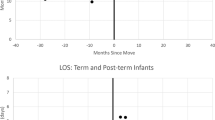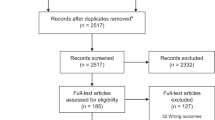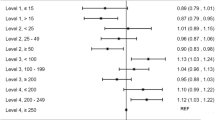Abstract
OBJECTIVE:
To perform a cost-effective analysis on the care of infants between 1000 and 1500 g birthweight (the study group), where outcomes are measured as survival to 1 year of age.
METHODOLOGY:
This was a multicenter observational study to determine the outcome, cost and cost-effectiveness of neonatal intensive care provided by Ministry of Health (MOH) Pediatric services. A total of 333 patients enrolled were eligible for analysis according to the inclusion and exclusion criteria of this study.
RESULTS:
Overall survival probability of the study group infants at 1 year of age was 78%. Survival at 1-year of age was 77% for infants with birth weight 1000 to 1249 g, 79% for 1250 to 1499 g. Survival at 1 year of age for the sample group was 53% for 22 to 27 weeks gestation, 80% for 28 to 36 weeks. The average cost-effectiveness ratio (CER) of neonatal intensive care for the study group infants was US$26 per survivor at 1 year of age (95% confidence interval US$3411, 5160).
CONCLUSION:
There was variability in the outcome and cost-effectiveness between the neonatal units, which need to be further assessed. However, neonatal intensive care services provided for the study group infants were cost-effective compared to that in developed countries.
This is a preview of subscription content, access via your institution
Access options
Subscribe to this journal
Receive 12 print issues and online access
$259.00 per year
only $21.58 per issue
Buy this article
- Purchase on Springer Link
- Instant access to full article PDF
Prices may be subject to local taxes which are calculated during checkout
Similar content being viewed by others
References
Phillips C, Palfrey C, Thomas P . Evaluating Health and Social Care. London: MacMillan Press; 1994.
Tugwell P, Bennett KJ, Sackett DL, Haynes RB . The measurement iterative loop: a framework for the critical appraisal of need, benefit and costs of health interventions. J Chron dis 1985;38(4):339–351.
Department of Statistics. Vital Statistics Malaysia 2000. Kuala Lumpur: Department of Statistics; 2000.
Department of Statistics. Vital Statistics Malaysia 1999. Kuala Lumpur: Department of Statistics; 1999.
Ministry of Health. Annual Report of Stillbirths and Perinatal Mortality in Malaysia 1998. Kuala Lumpur, Malaysia: Ministry of Health; 1999.
Malaysian VLBW Study Group. The Very Low Birth Weight Study 1996. Kuala Lumpur: Malaysian Paediatric Association; 1998.
Ho JJ, Amar HSS, Mohan AJ, Hon TH . Neurodevelopmental outcome of very low birth weight babies admitted to a Malaysian nursery. J Paediatr Child Health 1999;35(2):175–180.
Rogowski J . Measuring the cost of neonatal and perinatal care. Pediatrics 1999;103(1, suppl):329–348.
Boyle MH, Torrance GW, Sinclair JC, Horwood SP . Economic evaluation of neonatal intensive care of very low birth weight infants. N Engl J Med 1983;308:1330–1337.
Drummond MF, Stoddart GL, Torrance GW . Methods for the economic evaluation of health care programmes. Oxford: Oxford University Press; 1987.
Richardson AW, Gafni A . Treatment of capital costs in evaluating health care programmes. Cost Management 1983;58:26–30.
Gold MR, Siegel JE, Russel LB, Weinstein MC, editors. Cost Effectiveness in Health and Medicine. Oxford: Oxford University Press; 1996.
Chaudhary MA, Steams SC . Estimating confidence intervals for cost effectiveness ratios. Stat Med 1996;15:1447–1458.
Lemons JA, Bauer CR, Oh W, et al. Very low birth weight outcomes of the National Institute of Child health and human development neonatal research network, January 1995 through December 1996. NICHD Neonatal Research Network. Pediatrics 2001;107(1):E1.
Hack M, Wright LL, Shankaran S, et al. Very low birth weight outcomes of the National Institute of Child Health and Human Development Neonatal Research Network, November 1989–October 1990. Am J Obstet Gynecol 1995;172(2 Part1):457–464.
Horbar JD, McAuliffe TL, Albersheim S, et al. Variability in 28-day outcomes for very low birth weight infants: an analysis of 11 neonatal intensive care units. Pediatrics 1988;82(4):554–559.
Chang SC, Lin CH, Lin YJ, Yeh TF . Mortality, morbidity, length and cost of hospitalisation in very low birth weight infants in the era of national health insurance in Taiwan: a medical center's experience. Acta Paediatr Taiwan 2000;41(6):308–312.
Rogowski J . Cost-effectiveness of care for very low birth weight infants. Pediatrics 1998;102(1):35–43.
Stolz JW, McCormick MC . Restricting access to neonatal intensive care: effect on mortality and economic savings. Pediatrics. 1998;101(3 Part 1):344–348.
Tudehope DI, Lee W, Harris F, Addison C . Cost analysis of neonatal intensive and special care. Aust Paediatr J. 1989;25:61–65.
Pharoah OD, Stevenson RC, Cooke RW, Sandu B . Costs and benefits of neonatal intensive care. Arch Dis Child 1988;63:715–718.
Maniscalco WM, Kendig JW, Shapiro DI . Surfactant replacement therapy: impact on hospital charges for premature infants with respiratory distress syndrome. Pediatrics 1989;83:1–6.
Liggins GC, Howie RN . A controlled trial of antepartum glucocorticoid treatment for the prevention of respiratory distress syndrome in premature infants. Pediatrics 1972;50:515–525.
Victorian Infant Collaborative Group. The cost of improving outcome of infants of birth weight 500–900 g in Victoria. J Paediatr Child Health 1993;29:56–62.
Rogowski J . Cost-effectiveness of care for very low birth weight infants. Pediatrics 1998;102(1 Part 1):35–43.
Acknowledgements
The following are gratefully acknowledged for their help with the data collection: the nursing staff in the NICUs who took part in the study. We also thank the Director-General of Health for allowing publication of this paper.
Author information
Authors and Affiliations
Additional information
For the Cost-effectiveness NICU study group
Cost-effectiveness NICU study group: Irene Cheah, Padma Soosai, Wong Swee Lan, Lee Kok Foo, Chan Lee Gaik, Tan Kah Kee, Lee Meng Lee, Mohd. Hanifah, Hasmawati Hassan.
Rights and permissions
About this article
Cite this article
Cheah, I., Soosai, A., Wong, S. et al. Cost-Effectiveness Analysis of Malaysian Neonatal Intensive Care Units. J Perinatol 25, 47–53 (2005). https://doi.org/10.1038/sj.jp.7211196
Published:
Issue Date:
DOI: https://doi.org/10.1038/sj.jp.7211196
This article is cited by
-
Factors associated with hospitalization in a pediatric population of rural Tanzania: findings from a retrospective cohort study
Italian Journal of Pediatrics (2024)
-
Clinical outcome and cost of treatment and care for neonates less than 1000 grams admitted to Vali-e ASR Hospital
Health Economics Review (2014)
-
Cost of neonatal intensive care delivered through district level public hospitals in India
Indian Pediatrics (2013)



